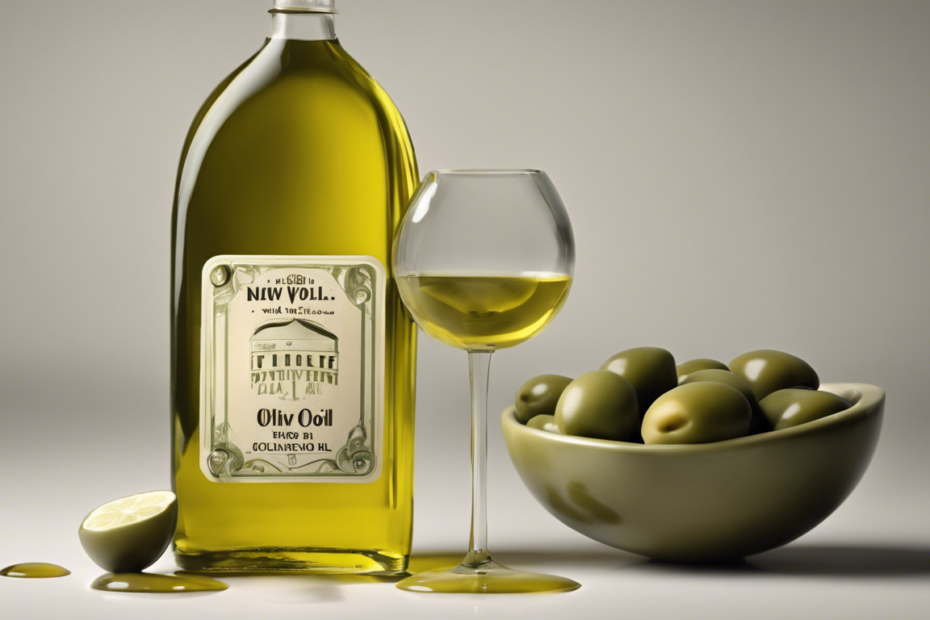If you’ve ever drizzled olive oil on a salad or used it in cooking, you might be curious about its nutritional makeup, especially when it comes to fat content.
Olive oil is a staple in many kitchens, celebrated not just for its flavor but also for its health benefits.
In this article, we’ll break down how many grams of fat are in olive oil, explore the differences in fat content across various types, and discuss why choosing the right olive oil can contribute to a healthier diet.
Key Takeaways
- Olive oil primarily consists of healthy monounsaturated fats that offer various health benefits.
- Different types of olive oil have varying fat contents, with extra virgin olive oil being the most nutritious.
- One tablespoon of olive oil contains approximately 14 grams of fat, mainly from oleic acid.
- Incorporating olive oil into your diet can help improve heart health and reduce inflammation.
- Choosing high-quality olive oil is important for maximizing its health benefits and flavor in cooking.
Understanding Olive Oil Composition
When it comes to olive oil, many folks are curious about how many grams of fat are actually in those golden bottles lining the grocery store shelves.
Generally, a tablespoon of olive oil contains around 14 grams of fat, and while that might sound like a lot, it’s important to remember that most of this fat is the heart-healthy monounsaturated kind, which can actually help reduce bad cholesterol levels.
Different types of olive oil, whether it’s extra virgin, virgin, or light, may have slight variations in their fat content, but overall they maintain that beneficial fatty acid profile.
Plus, olive oil is rich in antioxidants and vitamins, making it a fantastic addition to your diet.
So, whether you’re drizzling it over a salad or using it to sauté veggies, choosing the right olive oil can provide tasty health benefits and fit beautifully into a balanced diet!
How Many Grams of Fat Are in Different Types of Olive Oil?
When diving into the world of olive oil, it’s interesting to note how the grams of fat in olive oil can vary across different types, each offering its own unique flavor profile and health benefits.
Generally, olive oil is predominantly composed of healthy fats, mainly monounsaturated fatty acids, which are great for heart health.
A single tablespoon of extra virgin olive oil contains about 14 grams of fat, out of which around 10 grams are monounsaturated fats.
This is important because those healthy fats can help lower bad cholesterol levels while boosting the good ones.
So, when you’re choosing the right olive oil for your diet, whether drizzling it over a salad or using it in your cooking, it’s crucial to consider not just the taste but also how those fats can support your overall health.
Opt for extra virgin olive oil for its superior quality and rich antioxidant content, making it a delicious and beneficial choice for your culinary adventures!
‘Let food be thy medicine and medicine be thy food.’ – Hippocrates
Health Benefits of Olive Oil Fatty Acids
When it comes to cooking oils, olive oil stands out, not just for its exceptional flavor but also for its impressive health benefits, especially thanks to its fatty acid composition.
With roughly 14 grams of fat in a single tablespoon of olive oil, most of these are healthy monounsaturated fats.
These fats are great for heart health as they help lower bad cholesterol levels while raising the good kind.
Additionally, the omega-3 and omega-6 fatty acids found in olive oil are essential for reducing inflammation and may aid in maintaining a healthy weight.
So, when you’re drizzling olive oil over your salad or using it to sauté your veggies, remember that those grams of fat are not just for flavor; they’re beneficial for your health too!
Choosing the Right Olive Oil for Your Diet
When it comes to choosing the right olive oil for your diet, it’s essential to consider not just the flavor but also the nutritional content—specifically, the grams of fat in olive oil.
While it might seem intimidating at first, don’t worry!
Most extra virgin olive oils contain around 14 grams of fat per tablespoon, which primarily consists of healthy monounsaturated fats.
These types of fats can help lower bad cholesterol and support heart health.
If you’re using olive oil as a dressing or for a quick sauté, you don’t have to stress too much about those grams; it’s all about moderation!
Plus, the rich flavor and aroma of a high-quality olive oil can elevate even the simplest dishes.
So, whether you’re drizzling it over salads or using it to cook up your favorite vegetables, just keep in mind that you’re adding a delicious, heart-healthy fat to your meals!
Frequently Asked Questions
How many grams of fat are in one tablespoon of olive oil?
One tablespoon of olive oil contains approximately 14 grams of fat.
Are all types of olive oil the same in terms of fat content?
Yes, most types of olive oil have similar fat content, with around 14 grams of fat per tablespoon, though the exact nutritional profile may vary slightly between extra virgin, virgin, and pure olive oils.
What are the health benefits of the fatty acids found in olive oil?
The fatty acids in olive oil, primarily monounsaturated fats, are linked to various health benefits, including reducing inflammation, improving heart health, and supporting weight management.
How can I choose the right olive oil for my diet?
When choosing olive oil, look for extra virgin olive oil for its higher quality, better flavor, and greater health benefits.
Consider factors like origin, harvest date, and packaging to ensure freshness.
Is olive oil a healthy option for those watching their fat intake?
Yes, olive oil is considered a healthy fat option, especially when used in moderation as part of a balanced diet.
Its monounsaturated fats can be beneficial compared to saturated and trans fats.


